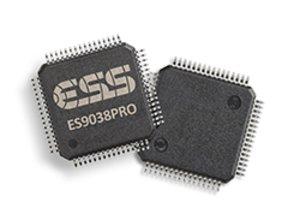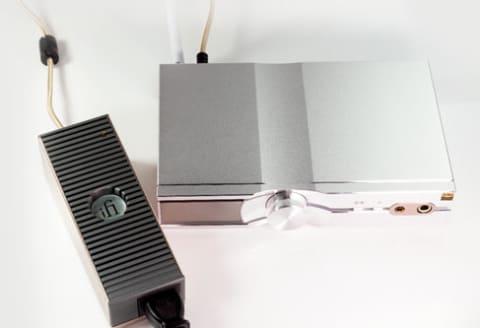What is a discrete DAC? There is no clear definition of discrete DAC in the first place. Discrete means "individual" and refers to an element with a single function. The opposite is a large-scale integrated circuit that collects multiple elements. In the case of DACs, a circuit that achieves DA conversion with a unique algorithm without using a general-purpose chip is called a discrete DAC, but each company has its own circuit configuration and algorithm. While utilizing integrated circuits such as FPGA and DSP, there are many cases where part of the circuit such as the final stage filter is configured with individual element groups, so most discrete DACs have a large physical circuit scale, and the chip alone In some cases, the area is more than 100 times larger. Semiconductors get smaller and more dense with each generation. For example, the size of the ESS ES9038Pro, which is often used in high-end audio products, is approximately 1 cm square. On the other hand, for example, the discrete DAC unit (right) installed in Esoteric's "Grandioso D1X" is about the size of an A4 size paper. Even if the occupied area is large and the cost is high, the reason why we dare to introduce a discrete DAC is because there are some merits there, and what is particularly important is that we can design freely without relying on existing devices, and it is easy to get closer to the sound we are aiming for. Manufacturers who are particular about sound have minimized the actual elements used even when using DAC chips, and have promoted efforts to independently design some of the main circuits such as digital filters and oversampling. The more elements that are developed in-house, the greater the degree of freedom in design and the accumulation of technology. It may be easier to understand if you think that a discrete DAC that does not use any existing DAC chip was born as an extension of such efforts. Currently, there are nearly 10 manufacturers of discrete DACs. Overseas, dCS, CHORD, Playback Designs, MSB Technology, EMM Labs, etc. are well known. In addition, manufacturers that are not well known in Japan, such as Holland's mola mola, are also introducing ambitious products. CHORD from the UK was one of the first companies to deliver DA converters using FPGA to the world. Based on the idea of DAC engineer Robert Watts, dCS, which performs high-order oversampling with its own digital filter, is digital processing by FPGA that operates with its own algorithm and resistors lined up with high-precision resistors. It consists of a ladder-type DAC, and is named a Ring DAC because the digital signal "draws a circle" inside the DAC. Relatively recent entrants are Marantz and Esoteric, each with multiple products. , is rapidly becoming more prominent. It is also actively introducing products into middle-class products rather than top-end products. In addition, the "ORGANIK" that Lynn put on the new generation KLIMAX DSM is a latecomer in order, but the fact that the company, which has a strong influence, has developed a discrete DAC is significant. ■Influence of changes in the environment surrounding the semiconductor industryIndirect reasons for the increase in the number of manufacturers developing discrete DACs in the last 10 years include changes in the environment surrounding the semiconductor industry and changes in the environment of each manufacturer. Circumstances also need to be considered. Demand for high-quality sound and high-performance devices for audio manufacturers, not limited to DACs, is often considered to be dwindling, making it difficult to actively develop new products. For audio manufacturers, the options are narrowing, and there are even cases where multiple manufacturers are fighting over the same DAC chip. In parallel with this, the shift to IT in home appliances and automobiles is accelerating, and the phenomenon of shifting the relative weight of production to that is also noticeable. In such a situation, unexpected events such as the fire at Asahi Kasei Electronics last year caused a fatal supply shortage of semiconductors, which were already in short supply, and forced audio manufacturers to replace them with alternative elements or make major design changes. be done. Unless we change the current situation where multiple audio manufacturers rely on products from a small number of device manufacturers, not just DACs, the risk of a similar situation occurring will not disappear. ■ Expectations for the next step in improving the sound quality of DAC





